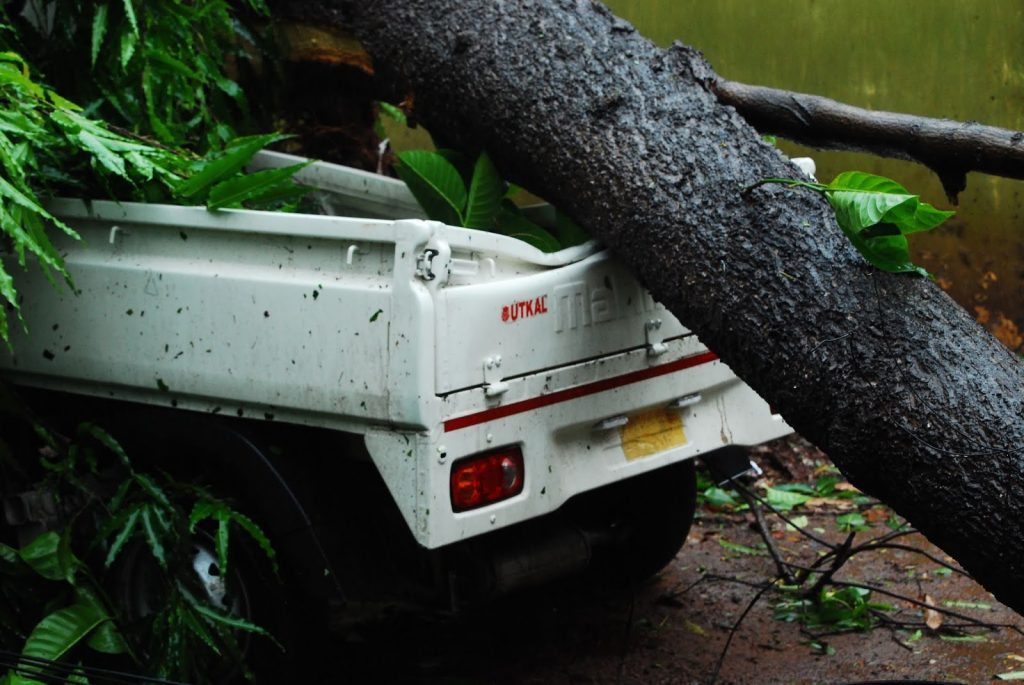Piyush Ranjan Rout
Under 24 hours from Cyclone Fani making landfall May 3, Odisha received appreciation for its ‘Zero Casualty Mission’ that saved many lives. The state machinery was able to evacuate some 1.2 million people who were directly in the cyclone’s path, in the 48 hours prior, to about 9,000 cyclone shelters or other safer places served by 8,000 community kitchens, with the help of about 46,000 volunteers and thousands of emergency personnel. A total of 2.6 million text messages in local languages were sent to cell phones, saving lives, although Fani sent in winds roaring at 175km per hour.
But even over a fortnight since Fani hit, television services are not fully restored, telecommunications and internet are not as uninterrupted as before and there are problems with supply of water and electricity besides clearance of garbage and distribution of relief.
There was expectation that just as with the Super Cyclone of 1999, other states will come forward to help Odisha to restore normalcy. But the damage to Bhubaneswar and Puri were really the result of unplanned development. The structures that have suffered damage are largely informal ones and the electric poles that fell were ones crowded with cables or hoardings and such other things.
Although the private sector is said to possess good human resource and technology, their true colours were visible within five hours of Fani making landfall, as internet and telecommunications got disrupted and television networks became inaccessible.
Although the electricity department was wise to cut power before the cyclone made landfall, they began even talking about restoring power much after the cyclone struck.
It is important that as part of disaster risk reduction, vulnerable sections in society are identified. Although such identification was done in the case of Fani, everyone except pregnant women was forgotten. This has exposed dimensions of disaster management hitherto ignored by both the private and public sectors in doing damage control.
The government needs to revisit its disaster management plan, keeping urban dimensions in mind.
People today assume that the government is prepared to manage disasters well. But a disaster such as Fani cannot be handled by the government alone, particularly with the expectations people keep on services going up. The government has to take stock of the reasons why, despite advancements in technology, telecommunications could not be restored properly despite the passage of several days.
The government must ascertain whether the power supply system has been designed to withstand wind speeds of, say, up to 250kmph. It also should be checked whether the city has adequate rooms or convention centres to accommodate vulnerable sections if disasters strike in future. Local hotels should be ordered to keep one or two rooms as refuges to accommodate vulnerable people if need be.
The local government also needs to urgently look at their waste management plan. Besides, efforts must be made to collect stories from neighbourhoods on how they survived the cyclone and managed till the city limped back to normalcy. Neighbourhoods should then evolve best practices of their own so that local disaster management plans can be strengthened.
The government, the private sector and civil society should work in tandem to help affected areas return to normal at the earliest. The most important focus area should be communications, as without it, information on the prevailing situation will not get through to people. Local communication hubs where people can gather to access communication services must be set up to tide over such situations.
Fani definitely shook a land of 46 million people, where the average income is under $5 a day and many go to sleep with just one meal a day. Odisha can feel proud that lots of lives were saved. But all stakeholders need to work towards migrating to the next level of disaster management by making resilience the target and taking the minimisation of economic loss and returning affected areas to normalcy within stipulated time as the next big challenge and a lesson it can give the rest of the world in future.
The writer is an urban management practitioner. He can be reached on Twitter @piyushrout.
